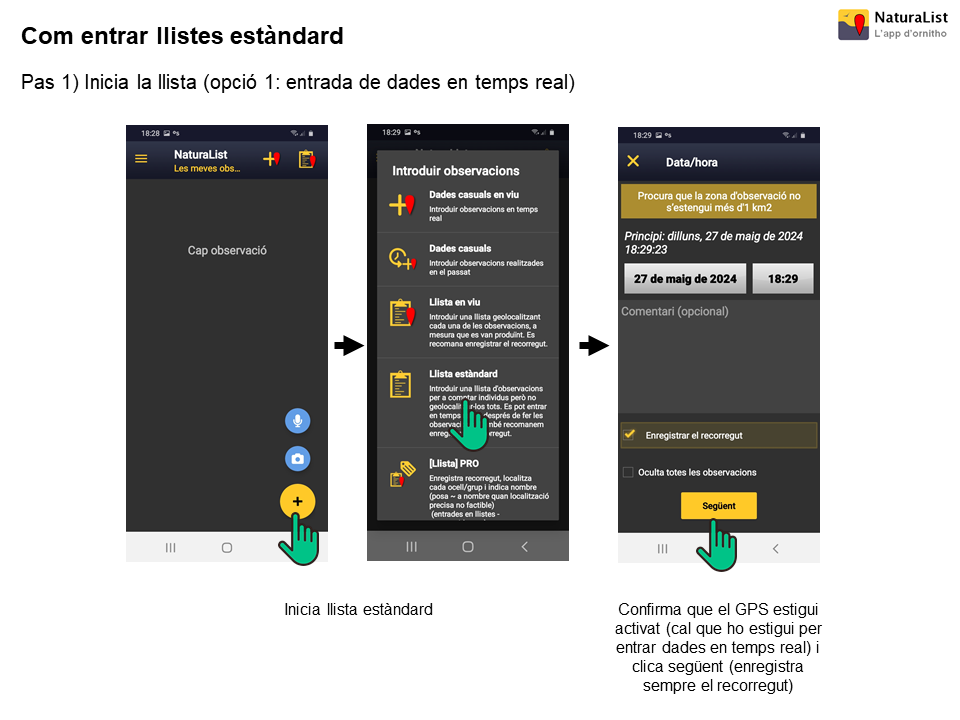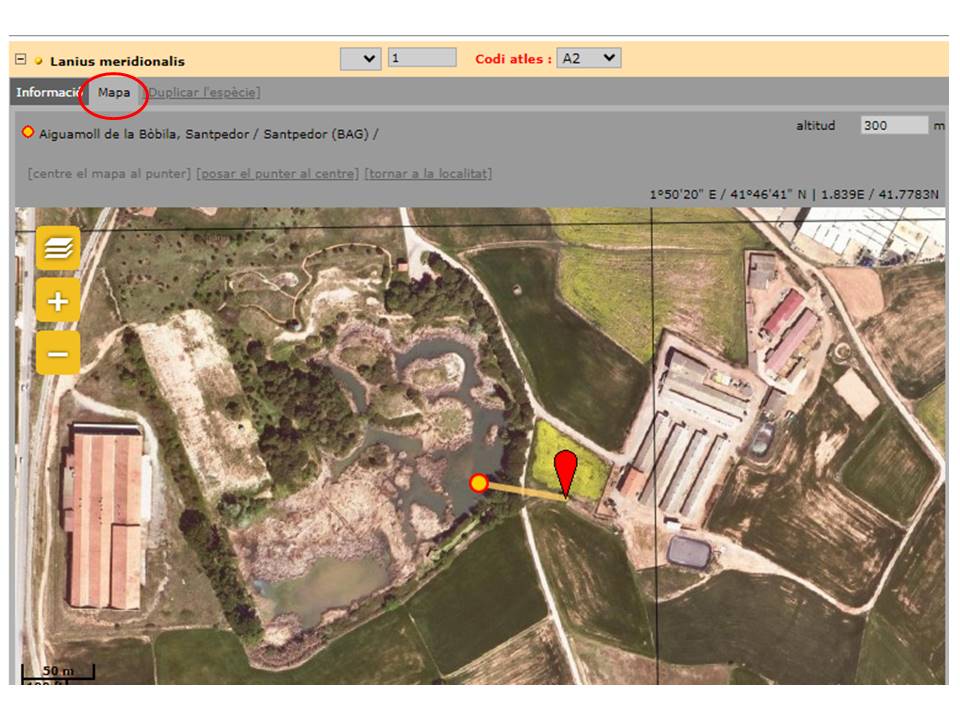Ornitho.cat permet introduir observacions amb localització precisa tant si entres llistes completes com dades casuals. Tot seguit t'ho expliquem. Primer, però, cal que tinguis en compte que les localitzacions precises que s'entren a Ornitho només són visibles pels propis observadors/es, pels gestors de les dades i per les administracions que les sol·liciten. Els altres usuaris del portal les visualitzen associades a un punt groc –localitat concreta– o blau –quadrat UTM 1x1–.
1) Llista estàndard amb localitzacions precises.
Si vols donar el màxim valor a les teves dades, la millor opció és fer llistes completes i assignar la localització precisa a les observacions de més interès des del punt de conservació (espècies amenaçades) o personal (p.ex. les de les espècies menys habituals al teu local patch). Tot seguit t'expliquem, pas a pas, com fer-ho fent servir l'app.






Si entres la llista estàndard des del web, veuràs que desplegant el menú de cada una de les espècies observades trobaràs una pestanya anomenada “Mapa” on es poden indicar les localitats precises corresponents. En cas d’observar individus d’una mateixa espècie a diverses localitats, pots seleccionar “Duplicar espècie” i automàticament s’afegirà una nova fila amb el mateix tàxon a la llista.

2) Llista en viu.
La principal diferència entre la llista estàndard i la llista en viu és que en aquesta última totes les observacions s'han d'entrar indicant la localització precisa. Per tant, només has de fer servir aquest tipus de llista si realment vols indicar la localització precisa de tots els ocells que detectes. En cas contrari, fes una llista estàndard.
El fet que s'hagi d'indicar la localització precisa de tots els ocells detectats, fa que les llistes en viu siguin molt més exigents, tant a nivell de coneixements com d'atenció, per a l'observador/a. És per això que, si es fa servir aquest tipus de llista, recomanem enregistrar sempre el recorregut i fer llistes de curta durada i distància (màxim 1 km).
3) Observacions puntuals.
Tot i que sempre dóna més valor a les dades recollir-les en forma de llista completa, també pot donar molt valor a les teves observacions entrant totes les teves dades casuals de les espècies marcades en vermell o groc (vegeu llistat) com a observacions puntuals amb localització precisa.
A l'app NaturaList, totes les observacions casuals (en viu o no) s'entren, per defecte, amb localització precisa. Al web, cal fer clic al punt del mapa que ens interessa i seleccionar “afegir una observació precisa”.
Ull amb el GPS!
Per a entrar les dades des de l’aplicació NaturaList és essencial assegurar-se que el GPS del mòbil està activat i que la precisió és bona (cal prestar atenció al missatge sobre la precisió de la posició a la part superior esquerra de la pantalla, i/o a l’emoticona que marca la posició, que hauria de trobar-se somrient). Si s’acaba d’obrir l’aplicació per primer cop des de fa dies o forces hores, és recomanable esperar uns segons abans d’entrar les primeres dades per assegurar-se que es el GPS es posiciona correctament.